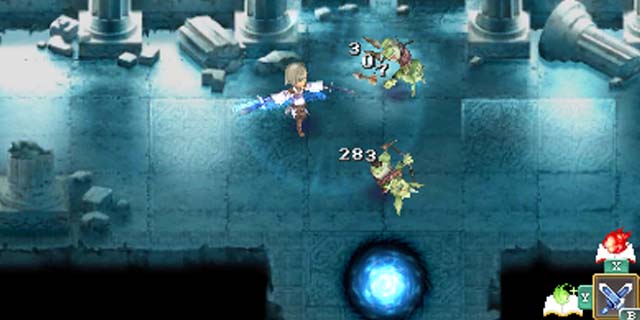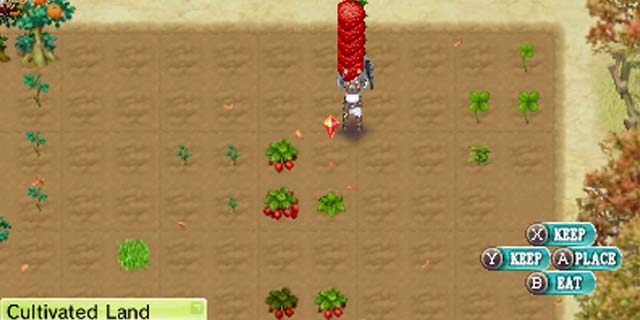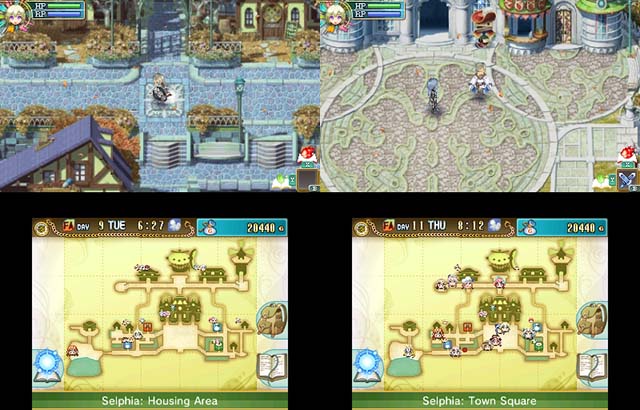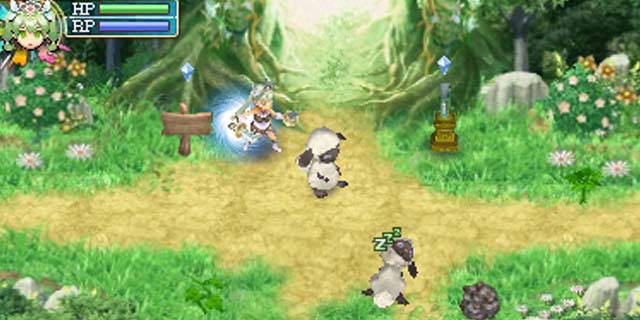
Given how well the simulation and role-playing genres work together, making the easygoing farming experience of Harvest Moon more engaging by adding RPG elements turned out to be developer Neverland’s chocolate and peanut butter. The sub-franchise has garnered a fair share of success on the DS, Wii and PS3, so its leap into the next generation was highly anticipated. Does Rune Factory 4 grow a four-leaf clover, or is the series sowing seeds in barren soil?
The original Harvest Moon was a very late release for the Super Nintendo that had a wildly unorthodox gameplay concept, even amongst its contemporaries in the sim genre. Placing the player in the relaxed context of a simple farmer, the series gained a cult following that grew more mainstream with its first sequel on the Nintendo 64. Many years later, Neverland decided to branch out with the series into RPG territory with Rune Factory. The series has grown with a conservative pace thus far, and with the release of Rune Factory 4, it seems as though it’s quite content with such a progression.

Rune Factory 4 uses mostly the same mechanics and conventions of the first five games, in that farming is still the anchor by which the gameplay is centered, with monster battles and adventuring used as a means by which to expand your farming capabilities or further the story. The farming mechanics themselves have been fleshed out long ago, and now all that’s left to do to improve upon them is to polish them further and further with interface enhancements and user customization. Rune Factory 4 uses a reasonably-quick menu system that categorizes items into weapons, spoils and spells.
While I miss the entirely touchscreen-based inventory system of previous entries, the organization is a nice touch that still keeps fiddling around in the menus at a minimum. It is still a hassle to put items into the shipping container, as you need to open the menu, find the item, select the item, close the menu and then throw the item every time you want to sell, which is something you will need to do at least once a day. This made me long for the bulk item transfers of Animal Crossing.

The RPG mechanics are a strictly top-down action-based affair. Rune Factory 4’s combat is fast and offers a great deal of variety, with a distinct Secret of Mana-esque bent. The gameplay here consists primarily of the “loot” mentality that has crossed over from Western to Japanese RPGs in recent years, to much popularity. However, to support such a system (and more importantly, the proper player state of mind), a greater element of chance and novelty is needed. The game goes to great lengths to make the player feel rewarded and accomplished, which is necessary in a game where repetition and cycles are a key component. In fact, it may go a bit overboard; many times, my character would get a skill boost for doing seemingly nothing at all. I like to be rewarded in games, but this is a bit much.
The game’s aesthetic and plot both borrow heavily from the familiar tropes and stylistic approaches of your average modern anime. While a corny, lighthearted anime game can make for some hearty gaming comfort food, it generally only works if the characters are fun and memorable. With Rune Factory 4, whether due to a poor script or themes lost in translation, I could never connect with any of the characters in any meaningful way. I found myself skipping through most scenes after the first few hours, which is never a good sign. Some of the time, the character’s actions go from quirky to just making absolutely no sense; more than once, I put my 3DS down to try and process what I just watched and why I should care. That said, the game’s aesthetic naturally lends itself to a vibrant and colorful world, all the more accentuated by the handheld’s 3D visuals. Thanks at least in part to the inviting art direction, the world itself became the most interesting character in the game.

Rune Factory 4 lives up to the franchise’s reliable legacy, with a world you can get lost in for hours on end. The story has been done to death and the characters are wooden at best, but the engaging and addictive gameplay are enough to redeem the game. If you have never played a Harvest Moon game, I would suggest picking up one of the main titles before you dive into the spin-offs. Franchise veterans will feel right at home, though, and enjoy Rune Factory 4‘s newest enhancements.
Pros: Addictive gameplay, varied combat, rock-solid farming mechanic
Cons: Tired story, boring characters, tedious item management



















